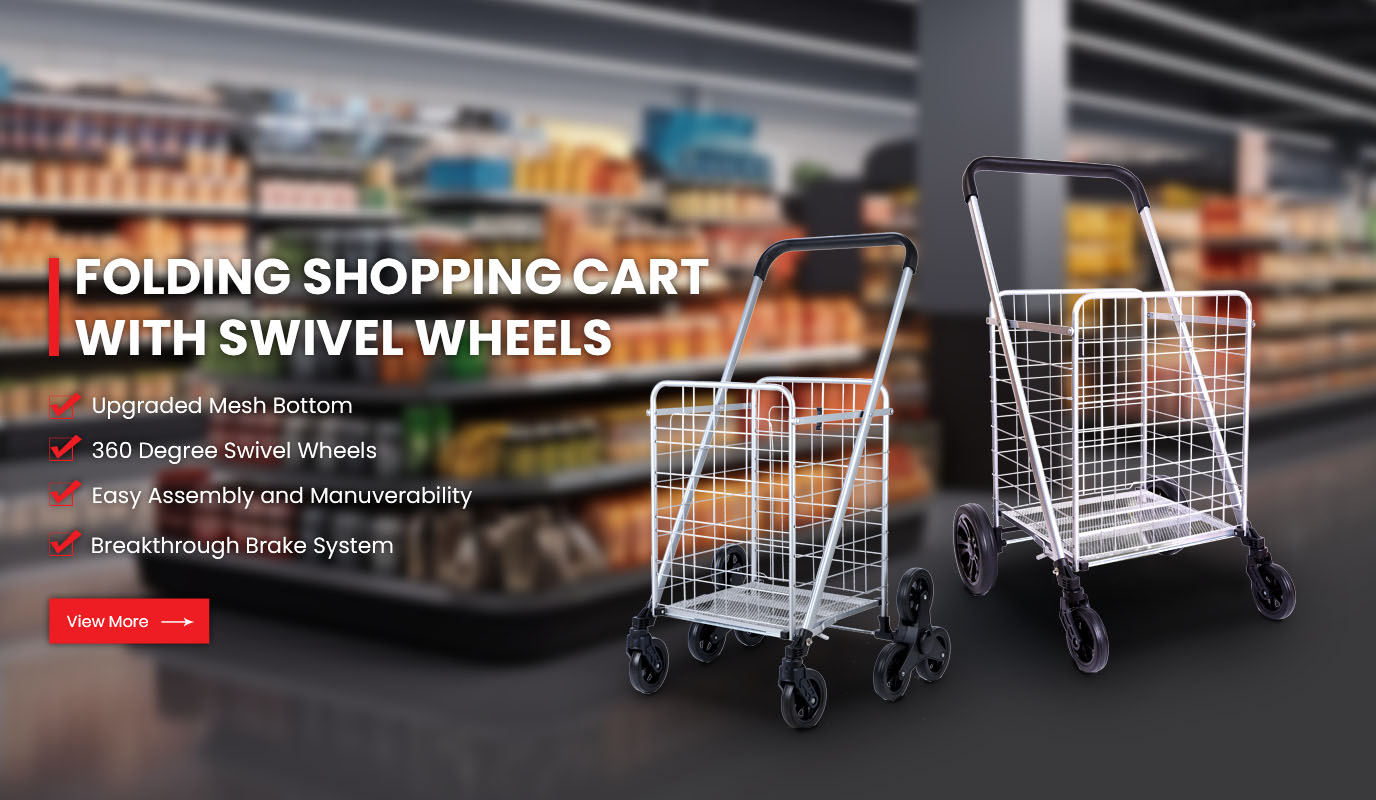How Ai-Driven Shopping Carts Reconstruct Consumption Space
When the signs of "Shopping Carts for sale" are gradually replaced by smart navigation screens, the retail industry is ushering in the second space revolution after e-commerce. In 2030, AI-driven shopping carts will no longer be just a means of transportation, but a mobile business terminal that integrates the Internet of Things, computer vision and predictive analysis technology. This technological revolution will not only reshape the shopping experience, but also trigger the chain evolution of the retail ecosystem.
Technology-driven experience upgrade
The third-generation shopping cart will have three core technical features:
Multimodal perception system: Through laser radar and visual SLAM algorithm to achieve centimeter-level positioning, it can accurately follow customers and maintain a safe distance. A technical solution shows that in a store with a flow density of 8 people/square meter, the following error can be controlled within 5 cm.
Predictive recommendation engine: Based on the customer's stay time in front of the shelf, picking action and biometric data, personalized promotional information is pushed in real time. Experimental data shows that the engine can increase the average customer price by 18%-25%.
Automatic checkout ecosystem: integrated with RFID scanning and weight sensing technology, customers can complete information entry the moment they put the goods into the shopping cart, and automatically deduct money from the bound account when leaving the store. This can reduce the number of traditional cashier channels by more than 70%.

Quantum leap in space operation mode
Physical retail will shift from "spatial display" to "dynamic service":
Hot zone reconstruction: The dynamic line data collected by the follow-up shopping cart can guide the store to make real-time layout adjustments. A supermarket pilot showed that by dynamically adjusting the position of the promotional end shelf, the sales of specific categories increased by 42%.
Human resource reconfiguration: The cashier position will be transformed into a "shopping consultant" to focus on high-value services. A retail group calculated that this model can reduce labor costs by 30% and increase customer satisfaction by 22%.
Supply chain response: The purchase behavior data collected by the shopping cart can be directly connected to the warehouse management system. A fresh supermarket has shortened the replenishment cycle from 4 hours to 15 minutes and reduced the loss rate by 18% through this technology.
Manufacturers' technological breakthrough path
Traditional shopping cart manufacturers face the life-or-death test of "terminal intelligence":
Hardware reconstruction: It is necessary to develop a modular electronic architecture to support hot-swap upgrades of computing units. The "digital chassis" solution developed by a certain company can extend the life cycle of equipment by 5 years and reduce the cost of technology iteration by 40%.
Service transformation: From equipment sales to the "hardware + data" subscription model. The shopping cart maintenance system launched by a manufacturer reduces the equipment failure rate by 65% through predictive maintenance, and the annual service revenue accounts for 35% of the revenue.
Eco-building: Co-building a technology alliance with AI algorithm providers and payment platforms. The unified data interface standard developed by an industry alliance has attracted more than 200 retail companies to access, forming a positive cycle of technology ecology.
The challenge of balancing ethics and business
Technological evolution is accompanied by the emergence of new contradictions:
Privacy boundaries: The shopping behavior data collected by shopping carts involves sensitive information, and a data governance system that complies with GDPR standards needs to be established. The "privacy sandbox" technology developed by a certain company can balance data availability and anonymity.
Technology inclusion: The cost of high-end shopping carts may exacerbate retail stratification. The "Technology Sharing Plan" promoted by a public welfare organization is adapting smart shopping cart technology to community supermarket scenarios.
Human-machine collaboration: The interaction logic between shopping carts and people needs to be redefined. The "emotional computing" module developed by a laboratory enables the device to deliver more natural interactive feedback through light and voice.
In the retail landscape of 2030, follow-up shopping carts will become the core node of the "Internet of Things Business Entity". Traditional manufacturers that have laid out AI algorithms, flexible electronics and edge computing in advance will complete their transformation in this space revolution. Just as cars evolved from horse-drawn carriages, the transformation of the shopping cart's form is the reconstruction of the essence of retail services - from space operations to data-driven experience design, from commodity transactions to an ecosystem of value co-creation.



